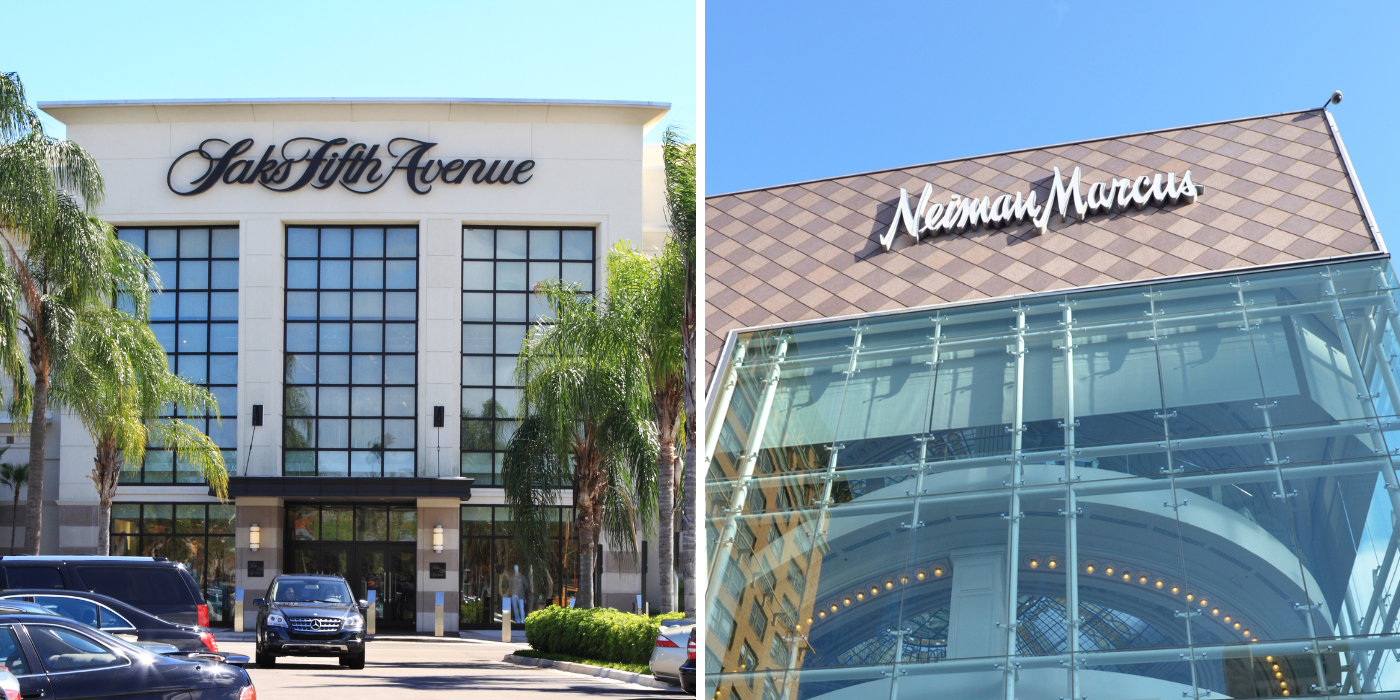Merger Overview

Neiman marcus saks merger – In a landmark deal that reshaped the luxury retail landscape, Neiman Marcus and Saks Fifth Avenue announced their merger in 2019. This strategic union brought together two iconic brands with complementary strengths and a shared commitment to providing an unparalleled customer experience.
In the world of luxury retail, the merger of Neiman Marcus and Saks Fifth Avenue created waves. However, amidst the fashion headlines, another news item caught our attention: San Francisco’s crackdown on stolen goods. The city’s new law aims to curb the rampant theft that has plagued businesses.
As Neiman Marcus and Saks Fifth Avenue navigate their merger, they will undoubtedly face challenges, but perhaps the San Francisco initiative offers a glimmer of hope in combating the scourge of stolen goods that affects the entire retail industry.
Reasons and Motivations
The merger was driven by several key factors. Neiman Marcus sought to expand its geographical reach and enhance its online presence, while Saks Fifth Avenue aimed to strengthen its foothold in key markets and diversify its product offerings. Additionally, both companies faced increasing competition from online retailers and sought to consolidate their resources to better compete in the evolving retail environment.
Timeline of Key Events
2019: Neiman Marcus and Saks Fifth Avenue announce their merger agreement.
2020: The merger is completed, creating the largest luxury retailer in the United States.
2021: The combined company launches a new e-commerce platform and introduces new loyalty programs.
Present: Neiman Marcus Group, the parent company of Neiman Marcus and Saks Fifth Avenue, continues to innovate and expand its luxury offerings.
Impact on the Retail Industry: Neiman Marcus Saks Merger

The merger between Neiman Marcus and Saks Fifth Avenue has significantly altered the landscape of the luxury retail market. The combined entity has emerged as a formidable force, with implications for both the companies themselves and the industry as a whole.
In terms of market share, the merger has created a clear leader in the luxury segment. Neiman Marcus and Saks Fifth Avenue were already two of the largest luxury retailers in the United States, and their combined operations now account for a significant portion of the market.
Competitive Landscape
The merger has intensified competition in the luxury retail market, forcing other retailers to adapt their strategies. Some competitors, such as Nordstrom and Bergdorf Goodman, have responded by expanding their own luxury offerings. Others, such as Macy’s and Bloomingdale’s, have focused on differentiating themselves through their value propositions and customer service.
Implications for the Industry, Neiman marcus saks merger
The merger has also had broader implications for the luxury retail industry. The combined entity has greater buying power, which gives it an advantage in negotiating with suppliers. This could lead to lower prices for luxury goods, which could benefit consumers.
Additionally, the merger could lead to consolidation in the luxury retail industry. Smaller retailers may find it difficult to compete with the combined entity, and some may be forced to close their doors.
Customer Experience and Brand Identity

The Neiman Marcus-Saks merger has significantly impacted customer experience and brand perception in the luxury retail sector.
Post-merger, both brands have focused on enhancing customer experiences by leveraging their combined strengths. They have introduced exclusive product offerings, such as co-branded collections and limited-edition items, catering to the unique preferences of their discerning clientele. Additionally, they have upgraded store operations, implementing omnichannel strategies that seamlessly integrate online and offline shopping experiences.
Product Offerings
The merger has expanded the product assortments of both brands, providing customers with a wider selection of luxury goods. Neiman Marcus, known for its upscale fashion and home décor, has benefited from Saks’ expertise in accessories, beauty, and menswear. Conversely, Saks has gained access to Neiman Marcus’ strong portfolio of designer brands and exclusive collaborations.
Store Operations
The merger has led to the consolidation of store locations, with some overlapping stores being closed or repurposed. However, the remaining stores have undergone renovations and upgrades to create a more luxurious and inviting shopping environment. The focus has been on providing personalized services, such as dedicated stylists, in-store events, and exclusive access to products and experiences.
Marketing Strategies
The merger has allowed Neiman Marcus and Saks to leverage their combined marketing resources to reach a wider audience. They have launched joint marketing campaigns, featuring exclusive collaborations and promotions. Additionally, they have invested in digital marketing initiatives, including targeted online advertising and social media campaigns, to engage with customers across multiple channels.
Challenges and Opportunities
Maintaining distinct brand identities while leveraging synergies has been a key challenge for the merged entity. Both Neiman Marcus and Saks have strong brand legacies and loyal customer bases. To address this, they have adopted a strategy of preserving the unique characteristics of each brand while exploring opportunities for collaboration.
For instance, Neiman Marcus continues to focus on its luxury fashion and home décor offerings, while Saks emphasizes its strength in accessories, beauty, and menswear. However, they have also introduced co-branded collections and exclusive products that leverage the combined strengths of both brands. This approach allows them to cater to a wider customer base while maintaining the distinct identities of each brand.
The recent merger between Neiman Marcus and Saks Fifth Avenue has created a retail powerhouse with a vast selection of luxury brands. Saks Fifth has long been known for its exceptional customer service and curated collections, making it a favorite destination for discerning shoppers.
With the combined resources of Neiman Marcus and Saks Fifth, the newly merged company is poised to offer an even more comprehensive and exclusive shopping experience.